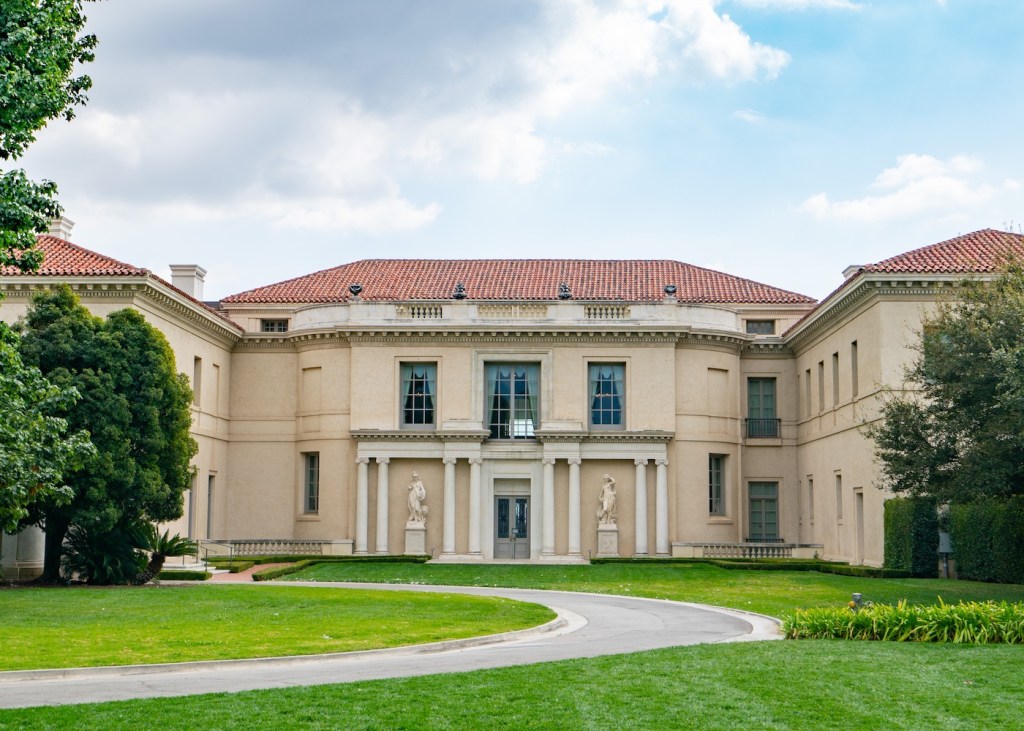Los Angeles–area cultural institution The Huntington, which encompasses an art museum, library, and botanical garden, has announced gifts to its art collection funded by The Huntington’s Art Collectors’ Council. Each year, the Council chooses works to acquire based on recommendations from the museum’s curators.
This year’s acquisitions include a view of London by 17th-century Dutch artist Thomas Wijck; an 1872 bust of a Black woman bound by ropes by French sculptor and abolitionist Jean-Baptiste Carpeaux; an early work by feminist artist Judy Chicago; a late 19th-century landscape by African-American painter, surveyor, and lithographer Grafton Tyler Brown; a scroll by Chinese painter Zhao Yuan from the early 1800s; and a tapestry by contemporary Kashmiri-British artist Raqib Shaw.
The gifts join those made to the institution earlier in 2025 by Deborah Last and the Jay and Deborah Last Collections. Among them are sculptures by Henry Moore, Jacques Lipshitz, and Harry Bertoia; prints by Frank Stella and Andy Warhol; and 19th- and early 20th-century works on paper by Americans James McNeill Whistler, Henry Farrer, and John Sloan.
Additionally, Huntington trustee Mei-Lee Ney has donated eight works by Cuban-born American artist Enrique Martinez Celaya—the Huntington’s first visual arts fellow—to the museum, adding to its existing collection of pieces by the artist. Spanning 25 years of Celaya’s career, the gift includes paintings, sculpture, mixed media, drawing, and photography.
Below are five works donated to The Huntington by its Art Collectors’ Council.
-
Thomas Wijck (1616–77), A View of the Thames at Westminster on the Lord Mayor’s Day, early 1660s
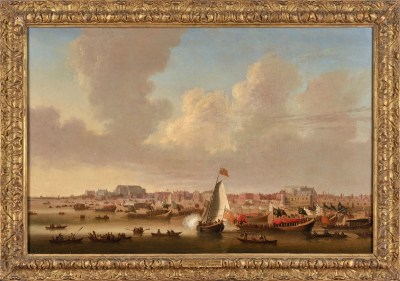
Image Credit: The Huntington Library, Art Museum, and Botanical Gardens. Digital image courtesy of Rafael Valls, Ltd. This painting by Dutch artist Thomas Wijck (1616–1677) captures the pomp of London’s festival of Lord Mayor’s Day, a celebration with roots dating back to 1215. Best known for Italianate renderings of seaports and coastlines, Wijck was born into a family of artists and trained by his father. After a sojourn in Rome between 1640 and 1642, he returned to the Netherlands, where he became a member of the Haarlem Guild of St. Luke. He first visited England in the early 1660s and is thought to have lived there until shortly before his death in Haarlem. One of the few extant paintings of London before the Great Fire of 1666, A View of the Thames at Westminster provides a revealing perspective on London’s commercial and civic life in the 17th century.
-
Jean-Baptiste Carpeaux (1827–1875), Why Born Enslaved!, 1872
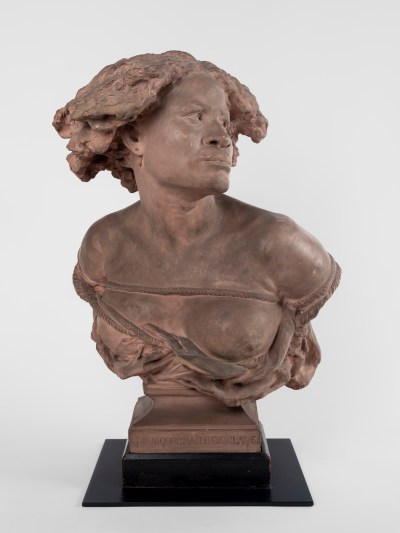

Image Credit: The Huntington Library, Art Museum, and Botanical Gardens. Digital image courtesy of Schoelkopf Gallery. One of French sculptor Jean-Baptiste Carpeaux’s most famous works, this life-size bust shows a woman of African descent dressed in tattered clothing and bound by ropes, her face and figure the embodiment of defiance. When Carpeaux first modeled Why Born Enslaved! in 1868, slavery had been abolished in America for only three years and in France for a little over 20, and it was still legal or tolerated in many other parts of the world. While the work carries an antislavery message, it now reads uncomfortably as both sensationalized and stereotyped. Still, it was so popular at the time that Carpeaux produced many versions of it in marble, bronze, and, as here, terracotta.
-
Judy Chicago (b. 1939), Pasadena Lifesavers, 1970
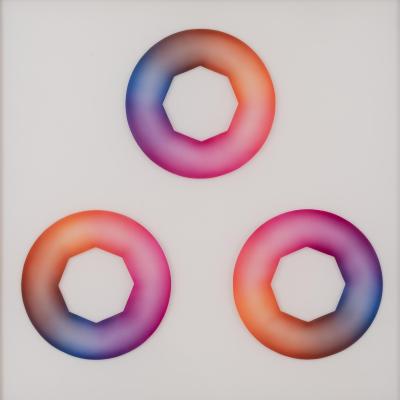

Image Credit: The Huntington Library, Art Museum, and Botanical Gardens. Digital image by Francis Baker, courtesy of Jessica Silverman, San Francisco. Artwork copyright © Judy Chicago/Artists Rights Society (ARS), New York. The first work of Judy Chicago’s to be acquired by the Huntington, this 1970 wall piece lies at the juncture of her early minimalist sculptures and her later feminist works featuring vulvar imagery. During the 1960s and ’1970s, Chicago, who had a studio in Pasadena, was an important practitioner of “Finish Fetish” sculpture, a California variant of minimalism marked by brightly colored, high-gloss surfaces. (To learn how to apply the automotive paint she used in these works, Chicago attended automotive school.) But while the sculptures of Finish Fetish artists like John McCracken were entirely abstract, works in Chicago’s “Pasadena Lifesavers” series were in the shape of O’s, as in orgasm.
-
Grafton Tyler Brown (1841–1918), Grand Canyon of the Yellowstone from Lookout Point, 1887
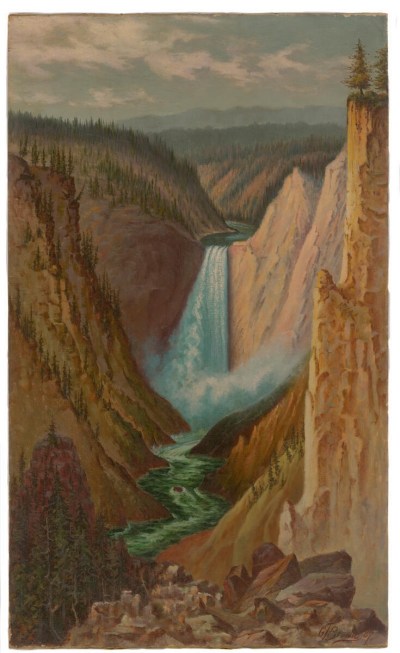

Image Credit: The Huntington Library, Art Museum, and Botanical Gardens. Digital images courtesy of Dolan Maxwell. One of several noted African-American landscape painters who worked in the 19th century, Grafton Tyler Brown was born to free people of color in Pennsylvania and studied lithography in Philadelphia. After moving to San Francisco in 1858, Brown worked as a lithographer; in 1867 he opened his own printing firm, G.T. Brown & Co., which produced maps and advertisements, as well as documentation of mining boomtowns in California and the Nevada Territory. In the 1880s, he sold his business and moved British Columbia before moving back to the United States and embarking on a career as a landscape artist. Along with this painting of the Grand Canyon, The Huntington’s Art Collectors’ Council’s gift to the museum includes a group of Brown’s hand-colored lithographs from 1875–80.
-
Zhao Yuan, Searching for Flowers at Heyang, or The Handsome Third-Ranked Scholar, c. 1804
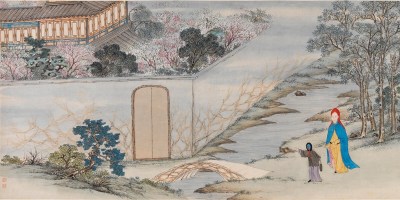

Image Credit: The Huntington Library, Art Museum, and Botanical Gardens. Photo: Ken Adlard. This 33-foot-long handscroll by Zhao Yuan, a Chinese artist active in the late 18th and early 19th centuries, features a painting of a young scholar in a garden and more than 40 calligraphic inscriptions. Its title suggests that the subject of the painting is someone hoping to do well in imperial examinations, while the scroll itself offers insights into the culture of Chinese officials of the time.


